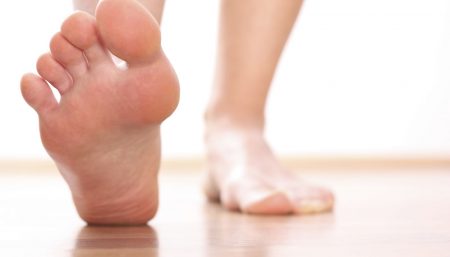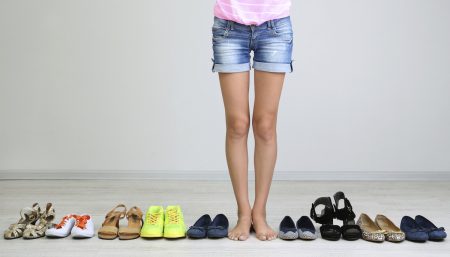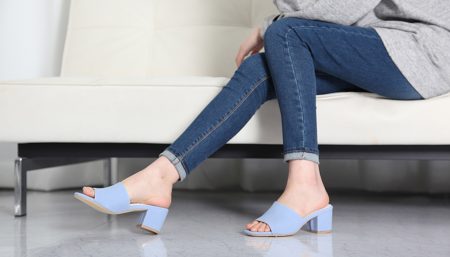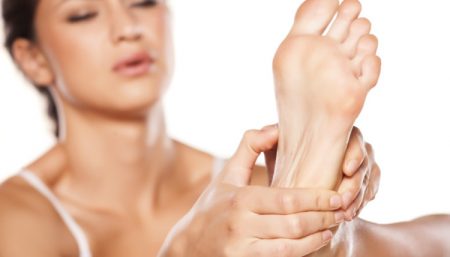
Some foot problems seem to favor women. More women than men develop bunions calluses, corns, hammertoes and ingrown toenails. The primary reason is the shoes they wear: narrow, pointed, high in the heel, often flimsy, and designed for appearance rather than fit.
Waiting to resolve a foot problem until it’s troublesome enough to merit a visit to the doctor is usually a mistake. Because feet are under the constant stress and pressure of bearing the body’s entire weight, even a small problem can grow large quickly, then take longer than necessary to clear up. It’s a lot harder to “rest” the feet than other parts of the anatomy unless you’re willing to stay in bed or a chair all day.
Ninety percent of women wear shoes that are too small for their feet, and 80 percent of women say their shoes are painful. As a result, nine times more women than men are likely to develop bunions, hammertoes and other painful foot deformities because of ill-fitting shoes.
 Cause
Cause

Shoe Bites can occur due to wearing new or ill-fitting shoes.
Feet sometimes spread and get larger with age and wear. Yet most people don’t have their feet re-measured periodically, as they should. The width of some people’s feet, can increase over the years from a size B to as much as a size E, especially if their shoes are too short, and particularly after age 55.
On average, women buy shoes one size too small. In one study, 90 percent were wearing shoes that were too small for them. It’s no surprise that women over age 55 have particular trouble getting a proper fit.
In constructing their lines of shoes, many manufacturers start with their smallest size, perhaps 5 or 6,and build up in the same proportions to a size 8 or 10. But an individual’s heel may be up to 1/4 of an inch wider than the larger size allows for, and the toe even more.
 To prevent shoe bites
To prevent shoe bites
Whenever you buy a new pair of shoes, use these preventive measures to prevent shoe bites.
Treat your new shoes:
- Apply a little petroleum jelly inside your shoe. Leave it on overnight. Clean it off with a cloth and then wear your shoes.
- Apply coconut oil inside your shoes for three consecutive nights to soften them before wearing.
You could apply castor oil too. - Apply some raw potato slices inside the shoe and particularly the heel area. Repeat for two nights before wearing your new shoes.
In case you do get a shoe bite, try the following herbal remedies:
- Take half cup rice. Pound it to a powder and then add enough water to make a thick paste. Apply the paste on the shoe bite. Leave it on till dry. Rinse gently with lukewarm water. Dry the feet thoroughly. You will get immense relief.
- Neem and Turmeric Paste: Take a few Neem leaves and add to them a tablespoon of turmeric powder. Add a little water and put it into mixer to form a thick paste. Apply this paste on the painful shoe bite. This gives tremendous relief and also dries up the bite.
If you want to own a pair of lotus feet, you just need to treat them right. A little care goes a long way.
 Suggestions
Suggestions
Follow these suggestions, for the best possible fit:
- Feet swell over the course of a day. Shop in the late afternoon or evening.
- Judge a prospective new pair of shoes by the way they feel, not by the size marked on the box. Both shoes should conform as closely as possible to the shape of your feet.
- One of your feet is likely to be larger than the other. Always try on both shoes and buy the size that feels comfortable on your larger foot.

- While being fitted, stand up. Ask the salesperson to make sure 3/8 to 1/2 inch of shoe extends beyond your longest toe in your larger foot.
- Make sure the ball of each foot fits into the widest part of the shoe.
- Wearing both shoes, walk around the store. Your heel shouldn’t feel pinched or slide out as you take a step.
- Don’t buy tight shoes and expect them to stretch.
Related Links
Disclaimer
The Content is not intended to be a substitute for professional medical advice, diagnosis, or treatment. Always seek the advice of your physician or other qualified health provider with any questions you may have regarding a medical condition.



